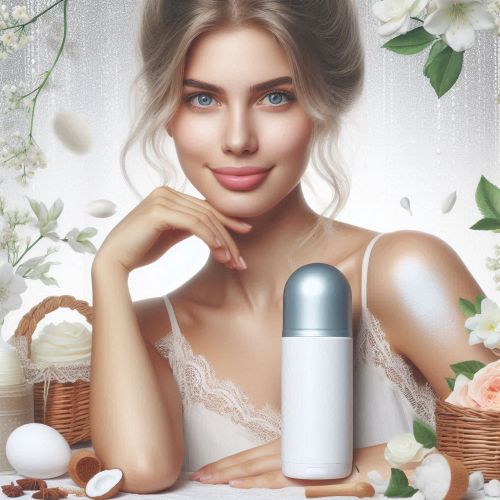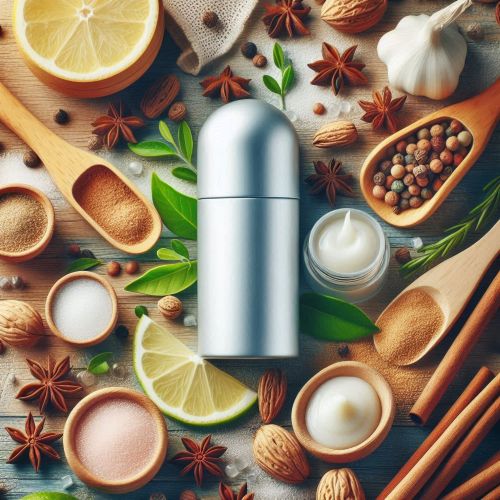-
 DIY: Video master classes
DIY: Video master classes
-
 Aromatherapy
Aromatherapy
-
 Felting master classes
Felting master classes
-
 Eating at home
Eating at home
-
 DIY cosmetics for children
DIY cosmetics for children
-
 Cooking recipes
Cooking recipes
-
 Detergents, cleaning products with your own hands
Detergents, cleaning products with your own hands
-
 Soap making as a business
Soap making as a business
-
 Natural cosmetics. Raw materials for cosmetics and soap.
Natural cosmetics. Raw materials for cosmetics and soap.
-
 Natural oils in cosmetics
Natural oils in cosmetics
-
 News
News
-
 Recipes for balms and conditioners
Recipes for balms and conditioners
-
 Bath Bomb Recipes
Bath Bomb Recipes
-
 Cream recipes. Cream making.
Cream recipes. Cream making.
-
 Lotion recipes. Gel recipes.
Lotion recipes. Gel recipes.
-
 Mask recipes
Mask recipes
-
 Soap recipes. Base soap. Soap from scratch.
Soap recipes. Base soap. Soap from scratch.
-
 Recipes for all occasions
Recipes for all occasions
-
 Natural shampoo recipes
Natural shampoo recipes
-
 Healthy Nutrition Recipes
Healthy Nutrition Recipes
-
 Scrub recipes. Massage tiles. Ubtan
Scrub recipes. Massage tiles. Ubtan
-
 DIY candles
DIY candles
-
 Reference materials, questions, tips
Reference materials, questions, tips
-
 Startup - soap production
Startup - soap production
-
 Hair care. Tips, recipes
Hair care. Tips, recipes
-
 Facial skin care. Cleansers.
Facial skin care. Cleansers.
-
 Body care. Tips, recipes
Body care. Tips, recipes
-
 Photo Reviews
Photo Reviews
-
 Chocolate Handmade
Chocolate Handmade
Deodorant-antiperspirant 48P - protection and comfort all day long

In today's fast-paced world, staying fresh and comfortable throughout the day is a top priority. While commercial deodorant-antiperspirants promise long-lasting protection, many contain chemicals that raise health concerns for some individuals. This article explores the benefits of creating your own natural 48-hour deodorant-antiperspirant, providing detailed recipes and insights into the power of natural ingredients for effective odor and sweat control.
Understanding Deodorants and Antiperspirants: The Difference
Before diving into DIY recipes, it's crucial to understand the difference between deodorants and antiperspirants:
- Deodorants: Work by neutralizing odor-causing bacteria on the skin's surface. They often contain antimicrobial ingredients and fragrances to mask smells.
- Antiperspirants: Aim to reduce sweat production by temporarily blocking sweat ducts, typically with aluminum-based compounds.
Our homemade recipes will focus on providing both deodorant and mild antiperspirant properties using natural alternatives.
Why Choose Homemade Deodorant-Antiperspirant?
Opting for a DIY approach to your underarm care offers several compelling advantages over conventional products:
- Natural Ingredients: Avoid potentially harmful chemicals like aluminum compounds, parabens, and synthetic fragrances.
- Customization: Tailor recipes to your skin's sensitivity and preferred scents.
- Cost-Effective: Natural ingredients are often more affordable in the long run.
- Reduced Environmental Impact: Minimize plastic waste and exposure to synthetic chemicals in the environment.
Homemade 48H Deodorant-Antiperspirant Recipes
Here are three detailed recipes for creating your own long-lasting, natural deodorant-antiperspirant:
Recipe 1: Baking Soda & Coconut Oil Solid Stick
This classic recipe combines the odor-absorbing power of baking soda with the moisturizing and antibacterial properties of coconut oil.
Ingredients:
- 1/4 cup Baking Soda (ensure it's finely ground for sensitive skin)
- 1/4 cup Arrowroot Powder or Cornstarch (for absorbing moisture)
- 4 tablespoons Coconut Oil (solid but easily meltable)
- 5-10 drops of your favorite Essential Oil (e.g., Tea Tree, Lavender, Bergamot - optional for scent and added benefits)
Instructions:
- In a heat-resistant bowl, gently melt the coconut oil using a double boiler or a very low heat on the stovetop. Do not overheat.
- Once melted, remove from heat and stir in the baking soda and arrowroot powder (or cornstarch) until a smooth paste forms. Ensure there are no clumps.
- Add your chosen essential oils (if using) and mix well.
- Carefully pour the mixture into an empty deodorant stick container or a small, wide-mouthed jar.
- Allow the mixture to solidify at room temperature or in the refrigerator for faster setting.
Useful Properties:
- Baking Soda: Neutralizes odor-causing bacteria.
- Arrowroot Powder/Cornstarch: Absorbs moisture, providing a mild antiperspirant effect.
- Coconut Oil: Moisturizes the skin and has natural antibacterial and antifungal properties.
- Essential Oils: Offer pleasant scents and additional antimicrobial or soothing benefits.
Advantages over Industrial Analogues:
Free from aluminum, parabens, and synthetic fragrances. Uses simple, natural ingredients known for their effectiveness.
Recommendations for Use and Storage:
Apply a thin layer to clean, dry underarms. Allow a few moments for it to absorb before dressing. Store in a cool, dry place. If using a jar, apply with clean fingers. Shelf life is typically 2-3 months depending on storage conditions.
Recipe 2: Shea Butter & Magnesium Hydroxide Cream
This gentler formula is suitable for those sensitive to baking soda. Magnesium hydroxide effectively neutralizes odor without being as alkaline.
Ingredients:
- 2 tablespoons Shea Butter (unrefined for maximum benefits)
- 2 tablespoons Coconut Oil
- 2 tablespoons Magnesium Hydroxide Powder (food grade)
- 1 tablespoon Beeswax Pellets (to provide a firmer consistency)
- 5-10 drops of your preferred Essential Oil
Instructions:
- In a heat-resistant bowl, melt the shea butter, coconut oil, and beeswax pellets using a double boiler or low heat. Stir until fully melted and combined.
- Remove from heat and let it cool slightly for a few minutes.
- Gradually whisk in the magnesium hydroxide powder until it is fully incorporated and the mixture is smooth.
- Add essential oils (if desired) and stir well.
- Pour the mixture into a clean, airtight jar or a wide-mouthed container.
- Allow it to solidify at room temperature or in the refrigerator. The consistency will be a soft cream.
Useful Properties:
- Shea Butter: Nourishes and moisturizes sensitive skin.
- Magnesium Hydroxide: Effectively neutralizes odor-causing bacteria and is gentler than baking soda.
- Beeswax: Provides a slightly firmer texture and helps create a protective barrier on the skin.
- Coconut Oil: Offers moisturizing and antimicrobial benefits.
- Essential Oils: Add fragrance and potential therapeutic properties.
Advantages over Industrial Analogues:
Aluminum-free and gentler on sensitive skin. Provides effective odor control with moisturizing benefits.
Recommendations for Use and Storage:
Apply a small amount to clean, dry underarms with your fingertips. Gently rub it in. Store in a cool, dry place. Shelf life is typically 2-3 months.
Recipe 3: Witch Hazel & Vegetable Glycerin Spray
This liquid spray offers a refreshing and quick application, focusing on odor control with mild moisture absorption.
Ingredients:
- 1/2 cup Witch Hazel (alcohol-free for sensitive skin)
- 2 tablespoons Vegetable Glycerin (a natural humectant)
- 1 teaspoon Baking Soda (optional, for extra odor control - use cautiously if sensitive)
- 10-15 drops of your favorite Essential Oils (choose refreshing options like Peppermint, Rosemary, or Citrus)
- A clean spray bottle
Instructions:
- Pour the witch hazel and vegetable glycerin into the spray bottle.
- If using baking soda, dissolve it in a small amount of warm water first to ensure it fully dissolves before adding it to the bottle.
- Add the dissolved baking soda (if using) and your chosen essential oils to the spray bottle.
- Secure the lid tightly and shake well to combine all ingredients.
Useful Properties:
- Witch Hazel: Acts as a natural astringent and can help reduce mild sweating.
- Vegetable Glycerin: Attracts moisture to the skin, preventing dryness.
- Baking Soda: Neutralizes odor (use sparingly if sensitive).
- Essential Oils: Provide fragrance and can have antibacterial or refreshing effects.
Advantages over Industrial Analogues:
Lightweight and quick-drying. Free from heavy waxes and potentially irritating chemicals. Offers a refreshing application.
Recommendations for Use and Storage:
Shake well before each use. Spray directly onto clean, dry underarms and allow it to air dry before dressing. Store at room temperature away from direct sunlight. Shelf life is typically 2-3 months.

Important Considerations and Tips
- Patch Test: Always perform a patch test on a small area of skin before applying any homemade deodorant-antiperspirant liberally, especially if you have sensitive skin or are trying a new recipe.
- Transition Period: Your body may need a transition period when switching from conventional antiperspirants to natural alternatives. You might experience more sweating initially as your body adjusts.
- Adjusting Recipes: Feel free to adjust the amount of baking soda or magnesium hydroxide based on your personal needs and sensitivity.
- Hygiene: Ensure all your equipment and containers are clean and dry to prevent contamination.
Conclusion: Embrace Natural All-Day Freshness
Creating your own 48-hour deodorant-antiperspirant is a rewarding way to take control of your personal care using natural and effective ingredients. By understanding the benefits and following these detailed recipes, you can enjoy long-lasting protection and comfort while prioritizing your health and well-being. Embrace the power of nature and say goodbye to harsh chemicals for a fresher, more confident you, all day long.
Mylo Opt Cosmetics Blog – Your Reliable Guide to Beauty and Care
Welcome to the Mylo Opt cosmetics blog! Here, you will find valuable advice, interesting recipes, and professional recommendations for creating soap, cosmetics, and candles with your own hands. Our blog is designed for anyone passionate about natural cosmetics, looking for new ideas, and wanting to learn more about producing high-quality skincare and haircare products. We share tested recipes, useful tips, and the latest news from the world of cosmetics.
Why Choose the Mylo Opt Cosmetics Blog?
Mylo Opt is not just an online store; it is a community of people passionate about creating natural cosmetics. Here are a few reasons why our blog will be useful to you:
- Experience and Expertise: Our authors are experienced cosmetologists, soap makers, and aromatherapy specialists. We share reliable and tested recipes that have undergone thorough testing and received positive feedback.
- Credibility and Authority: We ensure that all information in our blog is up-to-date and reliable. We reference scientific research and verified sources so that you can trust the quality of the information provided.
- Reader-Focused: Our content is tailored to you – our readers. We strive to answer your questions, solve your problems, and inspire new achievements in the world of natural cosmetics.
Popular Products from the Mylo Opt Online Store
Before we move on to recipes and tips, let us introduce you to the most popular products from our online store, which will help you create high-quality and natural cosmetics:
- Soap Bases: High-quality soap bases allow you to create beautiful and beneficial handmade soaps. We offer glycerin bases, bases with added oils and extracts, as well as transparent and white bases.
- Fragrance Oils and Fragrances: Give your products a unique scent with our fragrance oils and fragrances. We offer a wide range of scents – from fresh and floral to spicy and woody.
- Essential Oils: Essential oils are natural components that not only add fragrance to products but also offer beneficial properties for the skin and hair. Our range includes lavender, mint, eucalyptus, lemon, and many other oils.
- Active Ingredients: Vitamins, antioxidants, hyaluronic acid, and other active ingredients help improve the properties of your cosmetics. We offer only tested and high-quality components.
- Pigments and Dyes: Give your products bright and lasting colors with our pigments and dyes. They are safe for the skin and suitable for use in soap, cosmetics, and candles.
- Emulsifiers and Thickeners: To create creams and lotions, you will need emulsifiers and thickeners. We offer quality ingredients that help you achieve the desired consistency and stability of the product.
- Soap and Candle Molds: Create unique items with our soap and candle molds. Our range includes molds of various sizes and designs.
- Everything for Candles: Wax, wicks, fragrances, and dyes for candles – we have everything you need to create beautiful and fragrant candles.
Recipes and Tips for Making Handmade Soap
Cold Process Soap for Beginners
Making cold process soap is an exciting process that allows you to control all the ingredients and create unique recipes. Here is one simple cold process soap recipe for beginners:
Ingredients:
- 500 g olive oil
- 300 g coconut oil
- 200 g palm oil
- 150 g castor oil
- 120 g lye (sodium hydroxide)
- 300 ml distilled water
- Essential oils (lavender, mint, eucalyptus)
- Pigments or natural dyes (optional)
Process:
- Prepare all ingredients and tools. Always use protective gloves and goggles, as lye can be dangerous.
- Weigh the lye and water. Slowly add the lye to the water, stirring until it fully dissolves. Allow the mixture to cool to 40-45°C.
- Weigh the oils and melt them in a water bath. When the oils and lye solution reach the same temperature (about 40-45°C), slowly pour the lye into the oils, stirring constantly.
- Use an immersion blender to mix until trace (when the mixture thickens and leaves a trail when stirred).
- Add essential oils and pigments if desired. Mix thoroughly.
- Pour the mixture into a prepared mold and cover with a towel. Let the soap harden for 24-48 hours.
- Remove the soap from the mold and cut it into bars. Allow the soap to cure for 4-6 weeks before use.
Homemade Cosmetics Recipes
DIY Moisturizing Cream
Creating a moisturizing cream at home allows you to control the ingredients and adapt the recipe to your needs. Here is a simple recipe for a moisturizing cream:
Ingredients:
- 50 ml rose water
- 50 ml distilled water
- 10 g emulsifier (e.g., Olivem 1000)
- 10 ml jojoba oil
- 5 ml avocado oil
- 5 drops lavender essential oil
- 2 drops tea tree essential oil
Process:
- Weigh all the ingredients.
- In a water bath, melt the emulsifier with the oils until smooth.
- Separately, heat the water phase (rose water and distilled water) to the same temperature as the oil phase.
- Slowly pour the water phase into the oil phase, stirring constantly.
- Use an immersion blender to emulsify until you achieve a creamy consistency.
- Add essential oils and mix thoroughly.
- Pour the cream into a sterilized jar and allow it to cool.
DIY Candle Recipes
Aromatic Soy Candle
Creating aromatic candles is a creative process that allows you to experiment with scents and designs. Here is a simple recipe for a soy candle:
Ingredients:
- 200 g soy wax
- 20 ml fragrance oil (e.g., vanilla or lavender)
- Wick for candles
- Dyes (optional)
- Glass or metal candle mold
Process:
- Melt the soy wax in a water bath until liquid.
- Add the fragrance oil and dyes if desired. Mix thoroughly.
- Secure the wick in the center of the candle mold.
- Slowly pour the melted wax into the mold, holding the wick.
- Allow the candle to fully harden (about 24 hours).
- Trim the wick to the desired length and enjoy your aromatic candle.
Tips for Beginners in Cream Making
- Learn the Basics: Before starting to create creams, it is important to learn the basic principles and ingredients used in cream making.
- Experiment with Formulas: Do not be afraid to experiment with different ingredients and proportions to find the perfect formula for your skin.
- Use Quality Ingredients: The effectiveness and safety of your product depend on the quality of the ingredients. Always choose tested and natural components.
- Maintain Hygiene: It is important to maintain cleanliness and sterility when creating cosmetics to avoid contamination and spoilage of the product.
- Start with Simple Recipes: For beginners, it is best to start with simple recipes to master the basic techniques and principles of cream making.
Conclusion
Our Mylo Opt cosmetics blog is your reliable source of information and inspiration in the world of natural cosmetics. We share useful tips, tested recipes, and the latest news to help you create quality and effective products for skin, hair, and home care. Subscribe to our blog, follow the updates, and discover new opportunities in the world of natural cosmetics with Mylo Opt!





